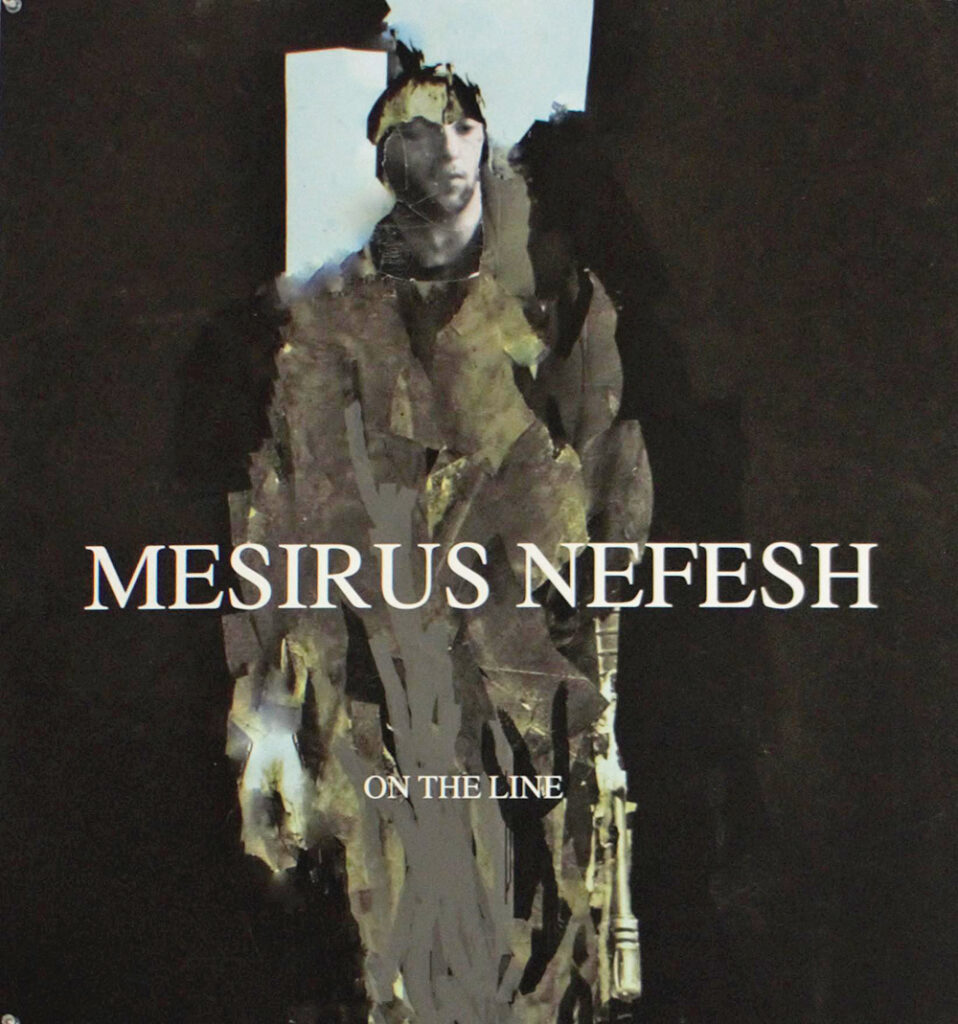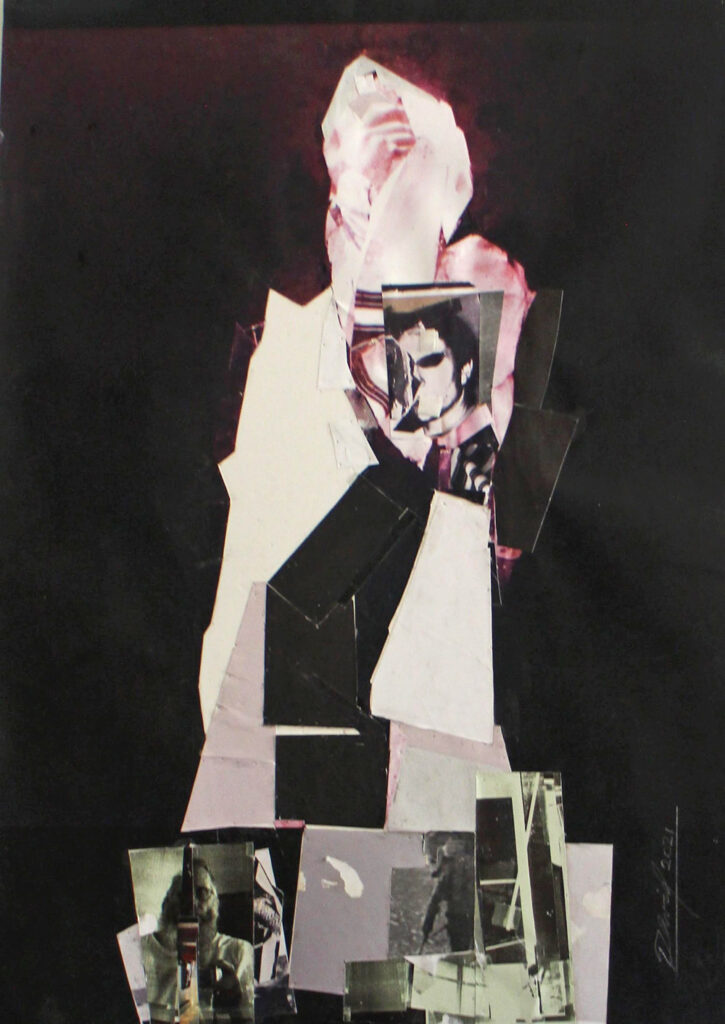David Schmidt has created an array of collages and digital prints that evoke such deep emotions tied to the state of Israel’s past, present and future. Art is often defined as a vehicle for the expression or communication of emotions and ideas — and Schmidt has succeeded beyond words.

“Miserus Nefesh,” Hebrew roughly translated as “self-sacrifice,” is the name of his exhibit currently at the Jerusalem Theatre (until August 31), dedicated as a tribute to the men and women who serve and have served in the Israel Defense Forces (IDF). Here we have the answer to the question based on the book of Proverbs: “A woman/man of valor – who can find?” Schmidt’s work is an emotionally evocative and thought-provoking art exhibit that aims to shed light on the experiences of young women and men who have faced the harsh realities of continuous terror and war. Through his choice of visual art, the exhibit delves into the lives of these courageous individuals, exploring their struggles, resilience and the lasting impact of their service.
Perhaps I am more moved than others since I currently have a daughter serving in a combat unit in the IDF, but in the words of Schmidt, the exhibit is about the Jewish people, “where we have come from and what we have endured.” The exhibit is easily understood by immigrant and native born Israeli alike; as well as by visitors who understand the Israeli experience, particularly knowing someone who has served or is serving in the IDF.

The images often express what the soldier was never able to; it is a “graphic language developed to express their experiences” and in turn it becomes a “passport to a new world of communication.” When viewing the artwork, one doesn’t need many words to explain what is being seen. There is an immediate visceral reflex through the complex collages, and the brilliance of it is that they are clear and easy to understand. They are self-explanatory; that is, one doesn’t need to know art to appreciate the work. Schmidt said that though the works are somewhat “abstract, they are made for real people with no minimizing or compromising on the esthetics.”
The exhibit reflects many different aspects of the soldiers’ journey with some of the pieces reflecting many facets, and others, just one powerful element. I have arbitrarily summarized the exhibit into several themes and impressions:
Innocence Lost: Here the tone is set by portraying the initial innocence and vulnerability of young soldiers as they enter the military. It showcases their hopes, dreams and aspirations, capturing the optimism that drives them to serve their country.
Extreme Conditions: This focuses on the extreme and often life-threatening conditions under which soldiers operate. Through Schmidt’s art, visitors are transported to battlefields that create a sense of the soldiers’ reality. The exhibit emphasizes the physical and psychological challenges they face daily.

Wounds Seen and Unseen: Addressing the visible and invisible wounds of war, we get a glimpse into the mental and emotional toll that soldiers endure — the loss of a limb, a debilitating wound, as well as the internal struggles, such as post-traumatic stress disorder (PTSD), anxiety and depression. The aim is to foster empathy and understanding among visitors while raising awareness about what soldiers experience.
Sacrifice and Spirit: Sadly, there are soldiers who made the ultimate sacrifice, emphasizing the profound impact their loss has on families, friends and communities. Schmidt pays tribute to fallen soldiers, highlighting their bravery, honor and the legacy they leave behind.
Surviving the Shadows: Many soldiers show a high level of resilience as they return from war. It showcases their journeys of healing, rehabilitation and reintegration into civilian life. Visitors can explore the art which depicts stories of hope and determination.
Throughout the exhibit, visitors are encouraged to engage with the artwork and reflect on the human cost of war. It is best to be with someone and encourage dialogue about the broader themes of war, sacrifice and the complexities of armed conflicts.
Originally from Los Angeles, Schmidt went to the UCLA School of Art and has now lived in Israel for 28 years, with two of his children and one grandchild having served in the IDF. His studio is open six days a week on the top part of Ben Yehuda Street downtown. When passersby of all types look in the window, they stop, and many come in to visit. Schmidt reported that “soldiers with their big guns, men in long black coats, women pushing strollers, new recruits, and old soldiers from earlier wars” all enter the studio.
It is especially relevant today with the deep divide among the people in Israel; yet here, in his studio and on the walls of the Jerusalem Theatre, Schmidt said, “there are no conflicts between left and right, or observant and secular because Mesirus Nefesh is about our best collective selves.”
He can be reached through his website at davidschmidt.art.
Arnie Draiman is a philanthropic consultant helping people and foundations give their tzedakah money away wisely, efficiently and effectively. He is also a very experienced social media and website guru, and enjoys reviewing restaurants, hotels and tourist attractions. He can be reached at ajdraiman@gmail.com or www.draimanconsulting.com.










